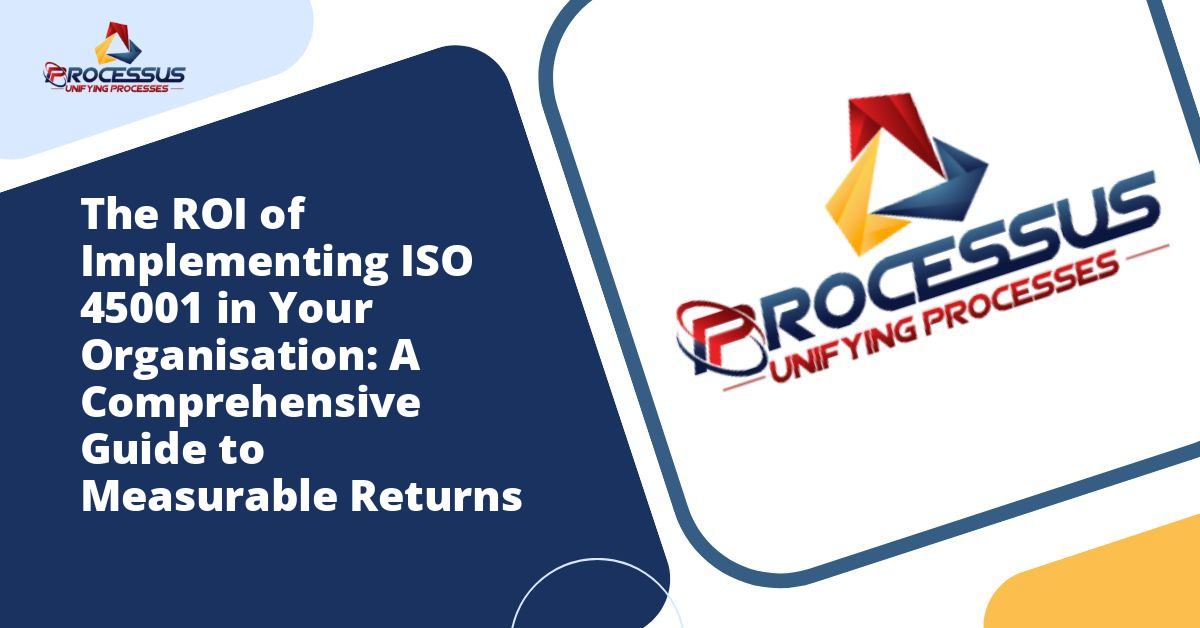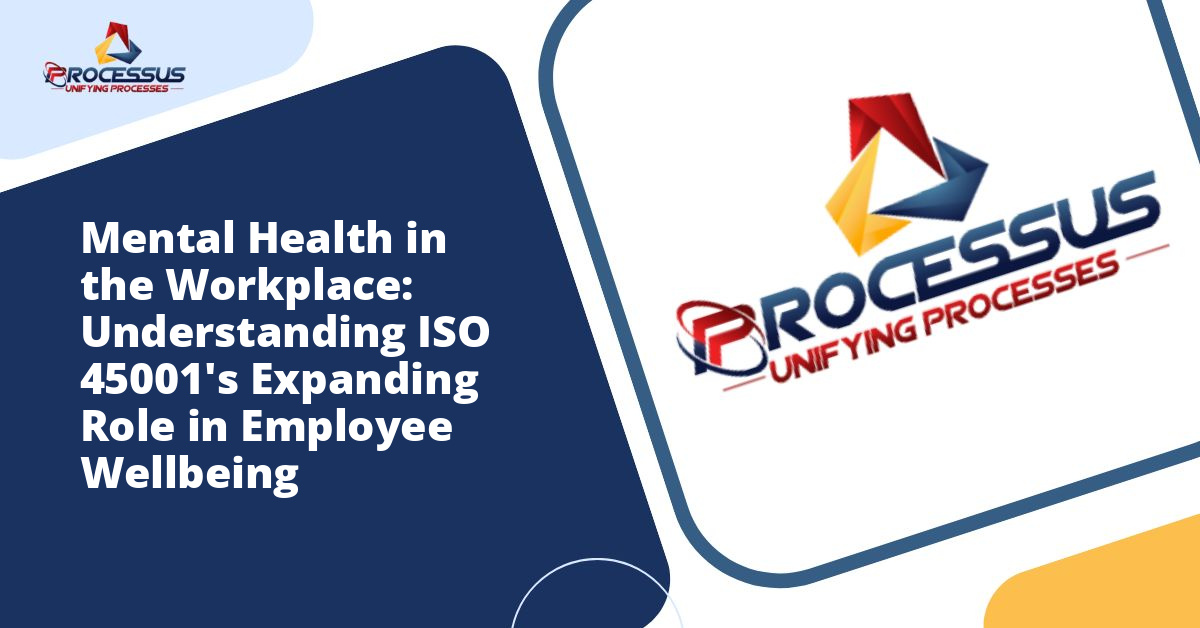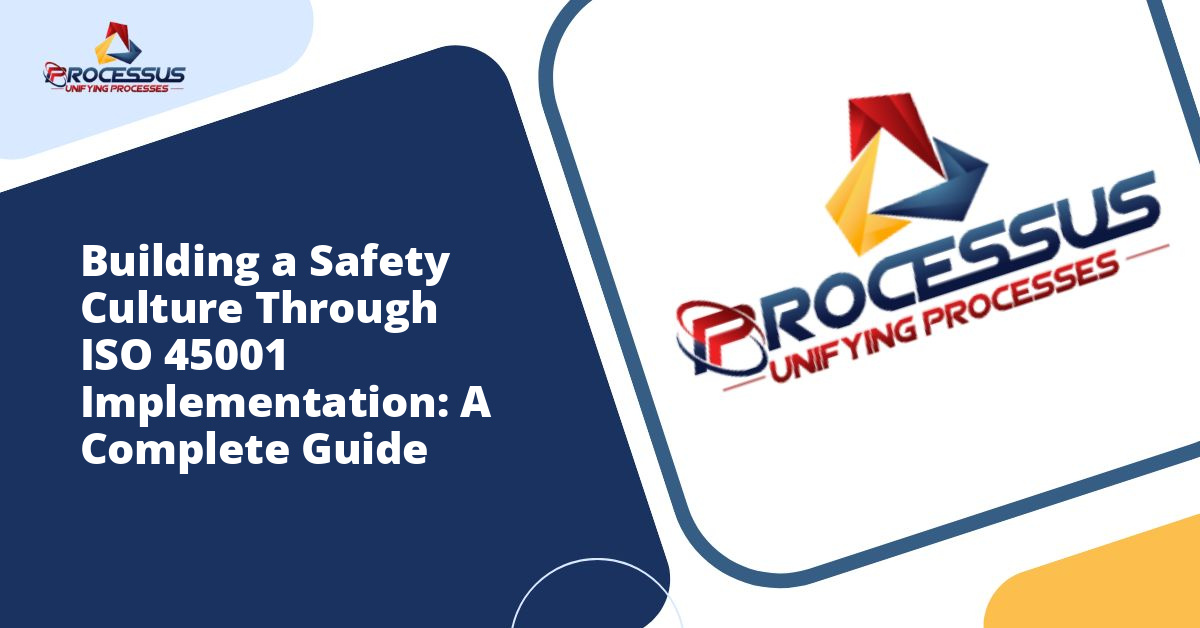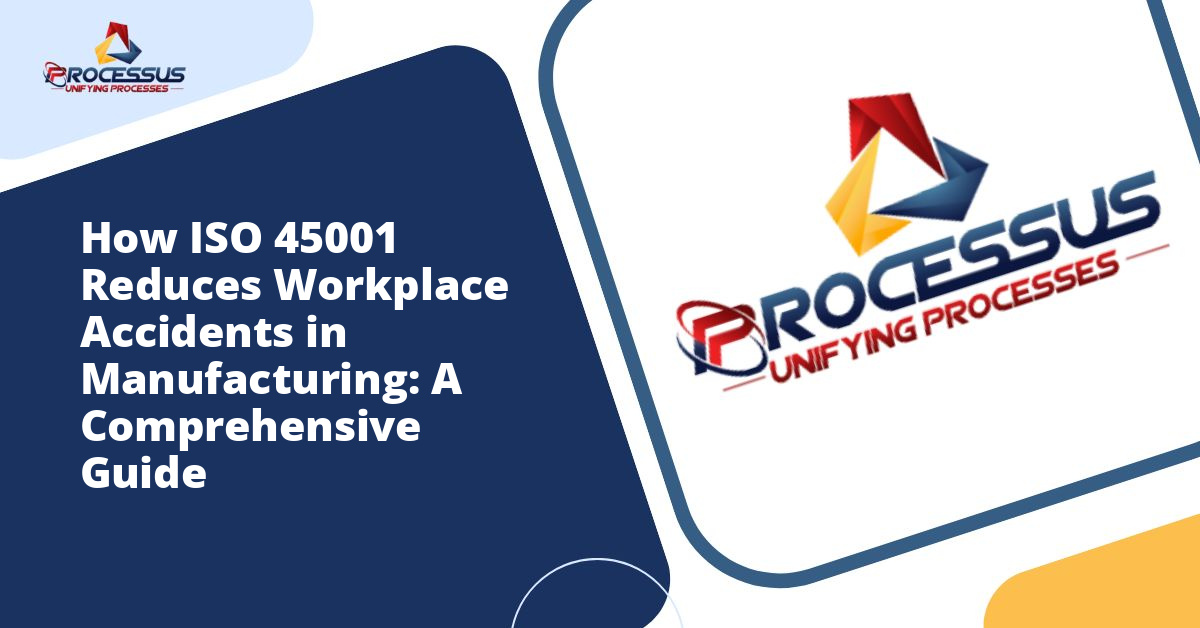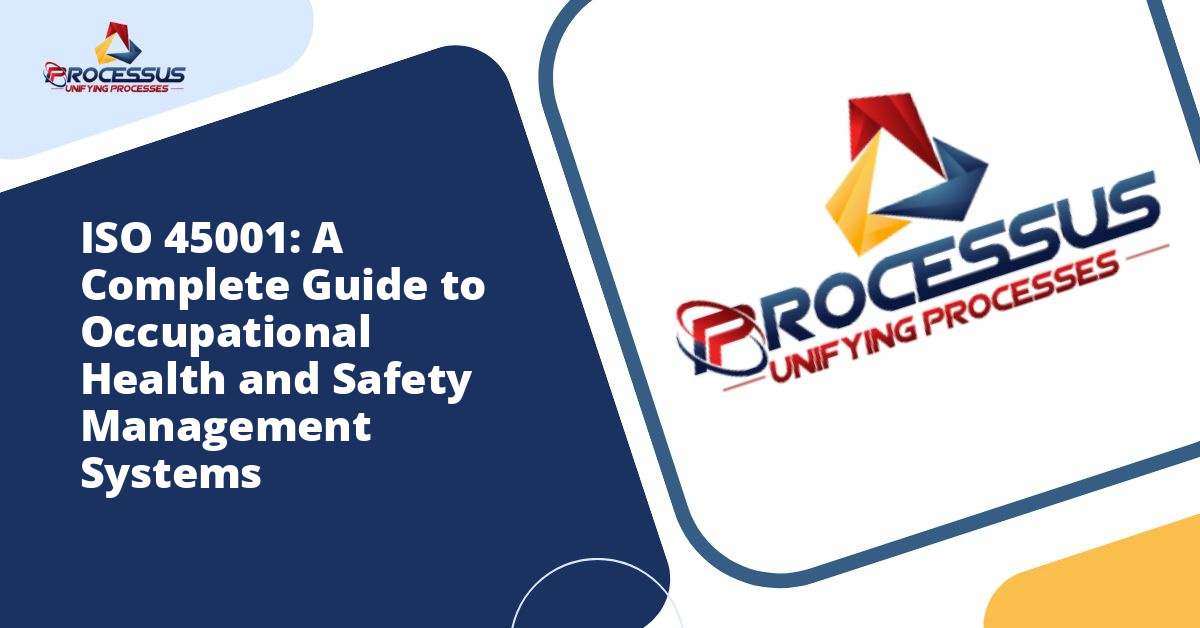In today’s business environment, occupational health and safety management has evolved from a compliance obligation to a strategic business investment. ISO 45001, the international standard for occupational health and safety management systems, represents a significant commitment for any organisation. However, the question that frequently arises in boardrooms and management meetings is whether this investment truly delivers tangible returns. The answer is a resounding yes, and this comprehensive analysis will demonstrate exactly how implementing ISO 45001 can transform your organisation’s bottom line while creating a safer, more productive workplace.
Understanding ISO 45001 and Its Business Value
ISO 45001 is the world’s first international standard for occupational health and safety management systems, published in March 2018. This standard provides a framework for organisations to manage risks and opportunities related to workplace health and safety, replacing the former OHSAS 18001 standard. Beyond mere compliance, ISO 45001 represents a systematic approach to preventing work-related injury and ill health while proactively improving occupational health and safety performance. You might also enjoy reading about How ISO 45001 Reduces Workplace Accidents in Manufacturing: A Comprehensive Guide.
The standard applies to organisations of all sizes and industries, from small businesses to multinational corporations. Its flexible framework allows companies to integrate health and safety management with existing business processes, making it a practical solution rather than an administrative burden. When properly implemented, ISO 45001 becomes embedded in the organisational culture, influencing decision-making at every level. You might also enjoy reading about ISO 45001: A Complete Guide to Occupational Health and Safety Management Systems.
Direct Financial Returns from ISO 45001 Implementation
Reduction in Workplace Incidents and Associated Costs
The most immediate and measurable return on investment from ISO 45001 implementation comes from the reduction in workplace accidents and incidents. Statistics from organisations that have achieved certification consistently demonstrate significant decreases in injury rates, often ranging from 30% to 60% within the first two years of implementation. You might also enjoy reading about Understanding ISO Standards: A Complete Guide to International Quality Management Systems.
Consider the financial impact of workplace incidents beyond the obvious medical costs. Each accident generates direct expenses including medical treatment, workers’ compensation claims, and potential legal fees. However, the indirect costs often exceed direct expenses by a factor of four to ten. These hidden costs include productivity losses, equipment damage, administrative time, investigation expenses, recruitment and training of replacement workers, and increased insurance premiums.
For perspective, a single lost-time injury in a manufacturing environment can cost an organisation between $30,000 and $50,000 when all direct and indirect costs are calculated. Organisations implementing ISO 45001 typically see a 40% reduction in such incidents within 18 months, translating to substantial savings. A medium-sized manufacturer experiencing 20 lost-time injuries annually could save between $240,000 and $400,000 per year through effective implementation of the standard.
Lower Insurance Premiums and Improved Risk Profiles
Insurance providers increasingly recognise ISO 45001 certification as an indicator of robust risk management. Many insurers offer premium discounts ranging from 10% to 30% for certified organisations, reflecting the reduced likelihood of claims. For organisations with annual insurance costs in the hundreds of thousands of dollars, these savings represent significant ongoing returns.
Beyond immediate premium reductions, certified organisations benefit from improved loss ratios over time. As incident rates decline and safety performance improves, organisations can negotiate more favourable insurance terms during renewal periods. This creates a compounding effect where initial investments in ISO 45001 continue generating returns year after year.
Reduced Absenteeism and Associated Productivity Losses
Workplace injuries and illnesses directly impact absenteeism rates, which carry substantial financial implications. The average cost of absenteeism varies by industry and role but typically ranges from $300 to $500 per day per employee when accounting for lost productivity, temporary replacement costs, and administrative overhead.
ISO 45001 implementation addresses both acute injuries and chronic health issues by promoting proactive hazard identification and risk assessment. Organisations report average absenteeism reductions of 20% to 35% following certification, with particularly notable improvements in industries with higher baseline injury rates. For an organisation with 500 employees and an average absenteeism rate of 3%, reducing that rate by even 25% could save approximately $180,000 annually.
Indirect Financial Benefits and Long-Term Value Creation
Enhanced Employee Productivity and Engagement
The connection between workplace safety and productivity extends far beyond preventing injuries. When employees feel safe and valued, their engagement levels increase substantially. Research consistently demonstrates that engaged employees are 17% more productive than their disengaged counterparts, and workplace safety is a fundamental driver of engagement.
ISO 45001 implementation creates systematic opportunities for worker participation and consultation, ensuring employees at all levels contribute to safety decisions. This inclusive approach fosters ownership and commitment, translating to higher quality work, fewer errors, and improved operational efficiency. Organisations with mature ISO 45001 systems report productivity improvements ranging from 8% to 15%, representing millions of dollars in value for medium to large enterprises.
Improved Talent Acquisition and Retention
In competitive labour markets, organisational reputation for workplace safety significantly influences talent decisions. Job seekers increasingly research potential employers’ safety records and certifications before accepting positions. ISO 45001 certification signals a genuine commitment to employee wellbeing, making organisations more attractive to top talent.
The financial impact of improved retention is substantial. Replacing an employee typically costs between 50% and 200% of their annual salary when accounting for recruitment expenses, training time, and productivity losses during the transition period. Organisations with strong safety cultures, reinforced by ISO 45001 systems, experience turnover rates 20% to 40% lower than industry averages. For an organisation with 200 employees and average salaries of $60,000, reducing turnover by even 5 percentage points could save $300,000 to $600,000 annually.
Competitive Advantage and Market Access
ISO 45001 certification increasingly serves as a prerequisite for participating in certain markets and securing contracts with major corporations. Many multinational companies now require suppliers and contractors to demonstrate certified occupational health and safety management systems. This trend is particularly pronounced in construction, manufacturing, oil and gas, and logistics sectors.
Beyond meeting minimum requirements, certification provides a competitive differentiator during tender processes. Organisations with ISO 45001 certification demonstrate professionalism, reliability, and commitment to ethical business practices. This reputational advantage translates to increased win rates for competitive bids and the ability to command premium pricing. Several studies indicate that certified organisations win 15% to 25% more contracts than non-certified competitors when safety management is a evaluation criterion.
Operational Efficiency and Process Improvements
Streamlined Safety Management Processes
Before ISO 45001 implementation, many organisations manage health and safety through fragmented, reactive approaches. The standard requires systematic documentation, clear responsibilities, and structured processes that eliminate redundancy and ensure consistency across operations.
This systematisation reduces administrative burden over time. While initial implementation requires resource investment, mature ISO 45001 systems operate more efficiently than ad-hoc approaches. Organisations report time savings of 25% to 40% in safety administration after systems are established, freeing resources for value-adding activities.
Integration with Other Management Systems
ISO 45001 follows the high-level structure common to other ISO management system standards, including ISO 9001 (Quality Management) and ISO 14001 (Environmental Management). This alignment facilitates integration, allowing organisations to operate unified management systems rather than maintaining separate, parallel structures.
Integrated management systems deliver significant efficiency gains by eliminating duplicate documentation, combining audits, and aligning policies and procedures. Organisations operating integrated systems report administrative cost reductions of 20% to 35% compared to maintaining separate systems, while achieving better overall performance across quality, environmental, and safety objectives.
Risk Management and Legal Compliance Benefits
Reduced Legal and Regulatory Risks
Compliance with occupational health and safety regulations is non-negotiable, yet many organisations struggle to maintain current knowledge of evolving requirements. ISO 45001 requires systematic identification of legal obligations and regular compliance evaluation, significantly reducing the risk of violations and associated penalties.
Regulatory fines for safety violations can range from thousands to millions of dollars, depending on severity and jurisdiction. Beyond monetary penalties, violations can result in operational shutdowns, criminal prosecutions of executives, and severe reputational damage. ISO 45001 certification demonstrates due diligence, potentially mitigating penalties if incidents do occur and providing strong defence against allegations of negligence.
Improved Stakeholder Confidence
Investors, customers, and community stakeholders increasingly evaluate organisations based on environmental, social, and governance criteria. Occupational health and safety performance is a critical social responsibility indicator, and ISO 45001 certification provides third-party verification of effective management.
This stakeholder confidence translates to tangible business value. Organisations with strong ESG profiles often enjoy higher valuations, better access to capital at favourable rates, and enhanced brand reputation. While difficult to quantify precisely, these benefits contribute substantially to long-term organisational value.
Calculating Your Organisation’s Potential ROI
Implementation Costs to Consider
To accurately assess ROI, organisations must first understand the investment required for ISO 45001 implementation. Typical costs include:
- Consultant fees for gap analysis, system development, and implementation support (if external expertise is engaged)
- Training costs for management, safety personnel, and employees
- Documentation development and system infrastructure
- Internal audit programme establishment
- Certification audit fees
- Ongoing maintenance and continuous improvement activities
For small to medium enterprises, total implementation costs typically range from $15,000 to $50,000, depending on organisational complexity and current safety management maturity. Larger organisations may invest $75,000 to $200,000 or more. However, these costs are typically incurred over 12 to 18 months, and many activities leverage existing resources rather than requiring new expenditures.
Measuring Returns and Building the Business Case
To calculate potential ROI, organisations should baseline current safety performance metrics and associated costs:
- Number and cost of workplace injuries and illnesses
- Workers’ compensation claims and insurance premiums
- Absenteeism rates and productivity losses
- Employee turnover costs
- Regulatory fines or violations
- Contract opportunities lost due to lack of certification
Conservative projections typically assume 20% to 30% improvements in these metrics over two to three years. Even using modest assumptions, most organisations achieve positive ROI within 18 to 30 months of certification, with returns accelerating as systems mature and safety culture strengthens.
For example, consider a manufacturing organisation with 300 employees facing the following annual costs: $800,000 in injury-related expenses, $200,000 in insurance premiums, $150,000 in absenteeism costs, and $400,000 in turnover expenses. If ISO 45001 implementation costs $60,000 and delivers conservative improvements of 25% in injuries, 15% in insurance costs, 20% in absenteeism, and 10% in turnover, the annual savings would total $350,000. This represents a first-year ROI of 483%, with ongoing annual returns far exceeding initial investment.
Critical Success Factors for Maximising ROI
Leadership Commitment and Resource Allocation
The most significant predictor of successful ISO 45001 implementation and strong ROI is visible, active leadership commitment. When executives champion the standard as a strategic business initiative rather than a compliance exercise, organisations achieve substantially better results.
Leadership commitment manifests through adequate resource allocation, personal participation in safety activities, and integration of safety performance into business decision-making. Organisations where senior leaders regularly discuss safety metrics, participate in audits, and hold managers accountable for performance consistently outperform those where safety remains delegated to specialist functions.
Employee Engagement and Cultural Change
ISO 45001 requires worker consultation and participation, but leading organisations go beyond minimum requirements to create genuine safety partnerships with employees. When workers actively identify hazards, suggest improvements, and take ownership of safety outcomes, incident rates decline more rapidly and sustainably.
Investing in comprehensive training, establishing effective communication channels, and recognising safety contributions creates positive reinforcement cycles. Organisations that successfully embed safety into cultural DNA rather than treating it as a programme achieve the strongest long-term returns.
Continuous Improvement and System Maturity
ISO 45001 is built on the Plan-Do-Check-Act cycle, emphasising continuous improvement rather than static compliance. Organisations that embrace this philosophy, regularly reviewing performance data, learning from incidents and near-misses, and proactively enhancing systems, achieve progressively better results over time.
The difference between adequate and excellent ISO 45001 implementation is substantial. While basic compliance delivers positive returns, organisations committed to excellence and continuous improvement can achieve transformational results that multiply initial investments many times over.
Conclusion: The Compelling Business Case for ISO 45001
The evidence supporting ISO 45001 implementation as a sound business investment is overwhelming. Across industries and organisational sizes, certified companies consistently demonstrate measurable improvements in safety performance, operational efficiency, and financial results. The returns extend far beyond avoided injury costs to encompass productivity gains, competitive advantages, risk reduction, and enhanced organisational reputation.
While implementation requires upfront investment of financial resources and management attention, the payback period is relatively short, typically 18 to 30 months. More importantly, the benefits compound over time as safety systems mature and organisational culture evolves. The question for business leaders is not whether ISO 45001 delivers ROI, but rather how quickly your organisation can capture these substantial returns.
In an era where stakeholders increasingly demand corporate responsibility, talent seeks employers who genuinely value worker wellbeing, and operational excellence determines competitive success, ISO 45001 represents far more than a safety standard. It is a strategic framework for building resilient, high-performing organisations that protect their most valuable asset while delivering superior business results. The return on this investment extends beyond financial metrics to encompass the fundamental purpose of business: creating value for all stakeholders while ensuring every worker returns home safely each day.

